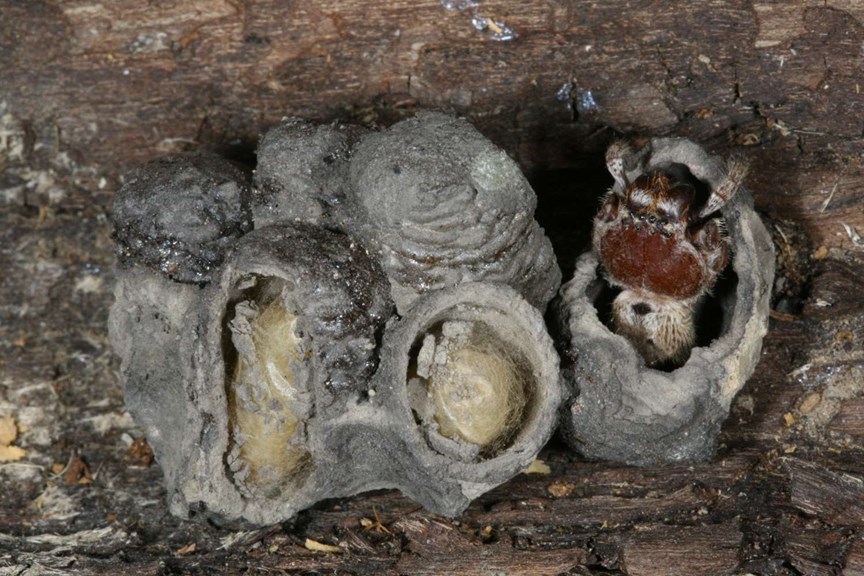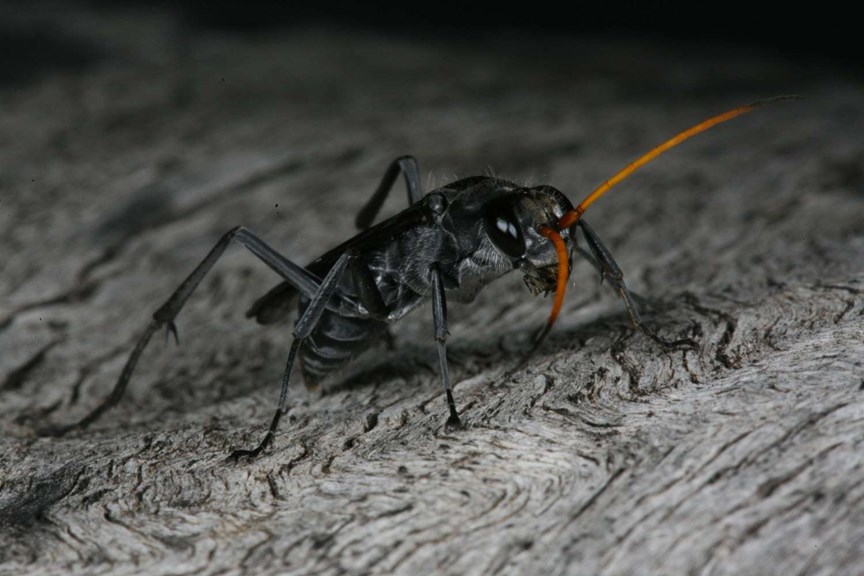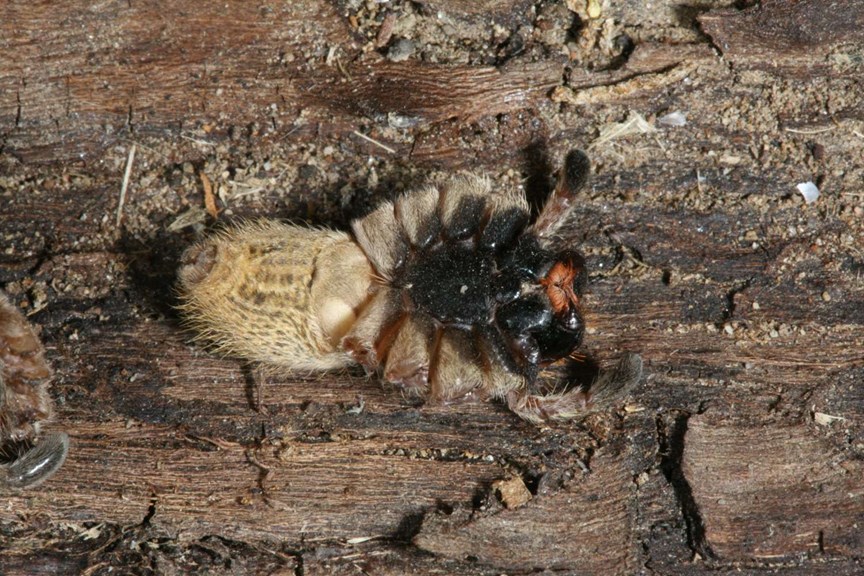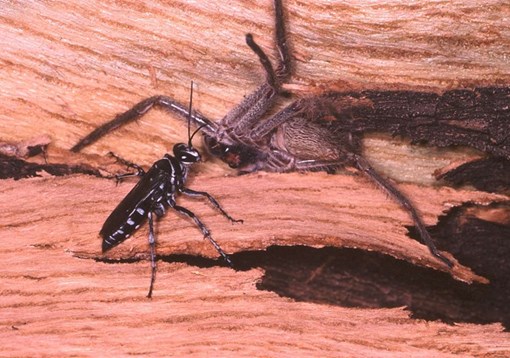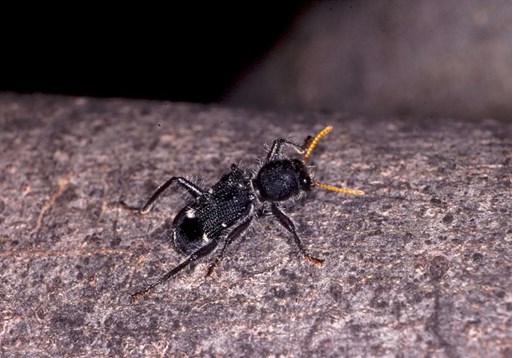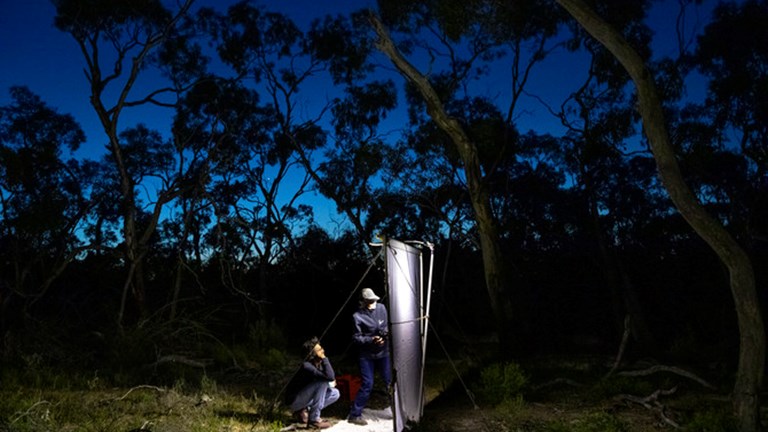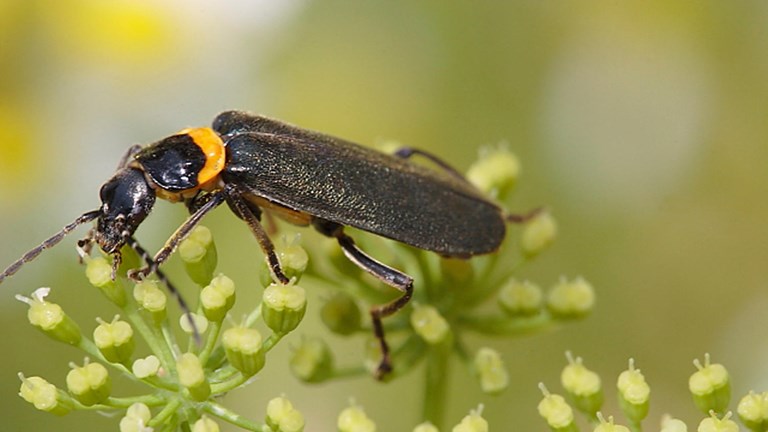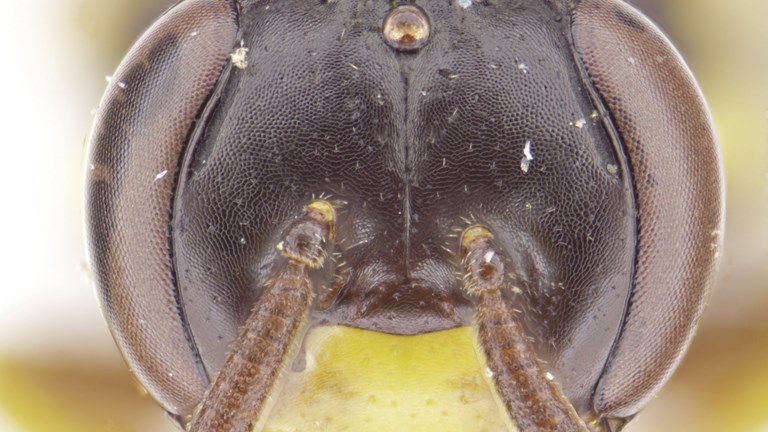Predator vs predator
Museums Victoria Bioscans and other biodiversity surveys tend to focus on the bigger and more spectacular Victorian animals, such as Gippsland Water Dragons and Wedge-tailed Eagles, but some of the most interesting stories come from the little creatures...
One such highlight of the recent Gippsland Lakes Bioscan was a mud nest of the Spider Wasp (Fabriogenia incompta), shown above.
The nest comprised six cells, each built to house a Mountain Huntsman (Isopeda montana). The cells are made from dried mud, probably mixed with eucalyptus resin to harden them.
The female wasp takes about one day to construct each cell, then heads off to find a live huntsman and undertakes a life-or-death battle. Upon seeing an approaching Spider Wasp, a Huntsman’s behaviour – excuse the anthropomorphism – is best described as a 'mad panic'.
The wasp is swift and deadly accurate, stinging the huntsman to immobilise it, then removing each of its legs at the first joint. She carries the spider back to her nest, lays an egg on its defenceless body, then seals it in.
The egg hatches into a fat wasp grub, feeding on the internal juices of the spider until nothing but a shrivelled husk remains. The grub then forms a pupa and eventually emerges from its cell as an adult wasp, ready to continue the cycle.
Most members of this wasp family, the Pompilidae, leave the spider intact and paralyse it permanently. In this case, not only does the wasp cut off its prey’s legs, but the venom seems to immobilise the huntsman only temporarily and the spider wakes up after the cell is sealed.
On a personal note, having handled spiders for more than 30 years and never being bitten, one of the huntsmans latched on to my finger while I was examining the nest. Like most huntsman bites there were no symptoms other than a sharp nip, and given its situation I couldn’t really blame it.
And as a side note, Spider Wasps are ferocious enough to have their own mimics. The Wasp-mimicking Beetle (Trogodendron fasciculatum) looks roughly like a Spider Wasp, with its black and white body and orange antennae, but its behaviour is almost identical. Moving rapidly over tree trunks with twitching antennae it would, at least, be safe from roaming huntsmans.
Got a question? We can help you with general research enquiries. Ask us!
